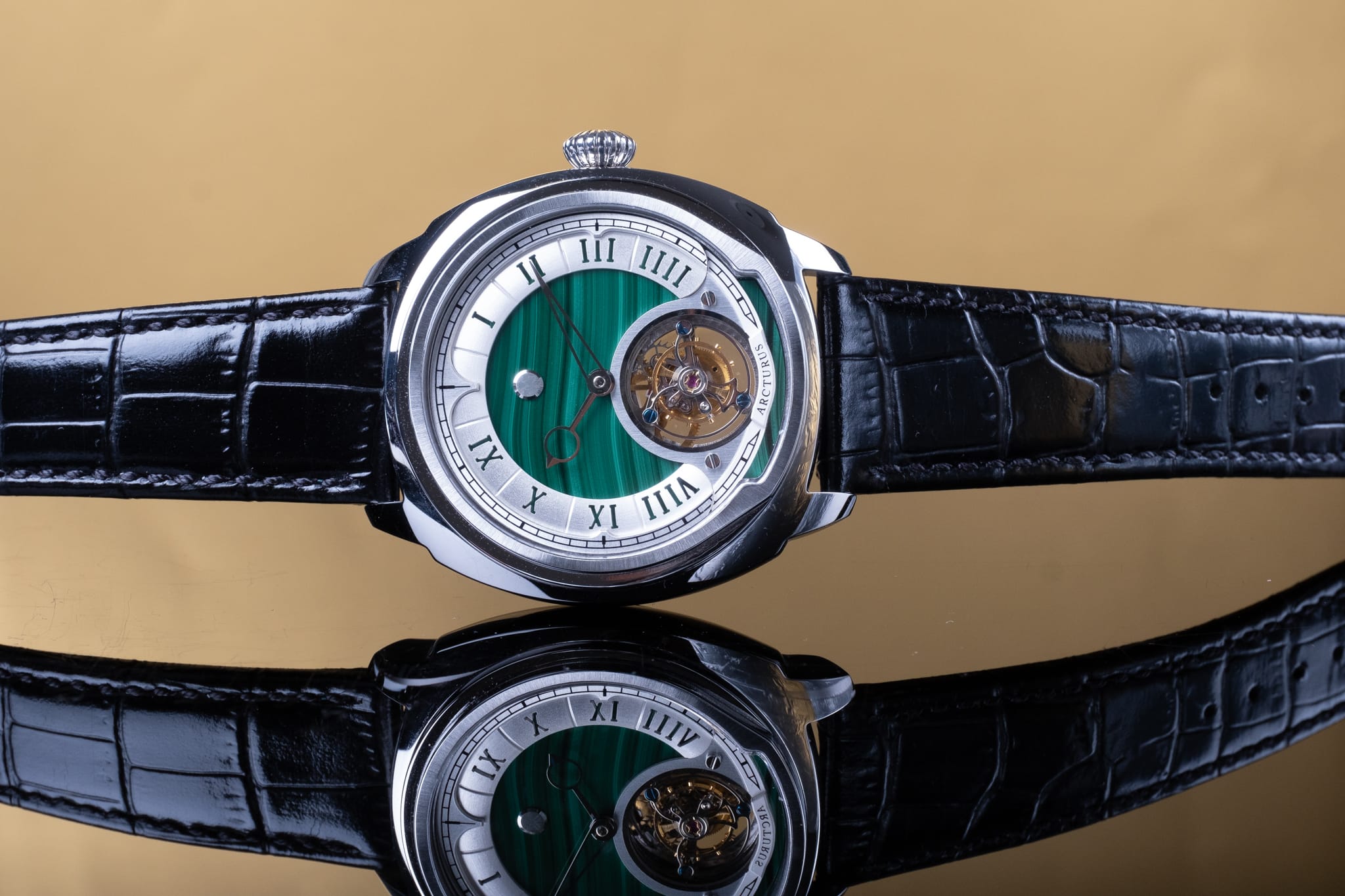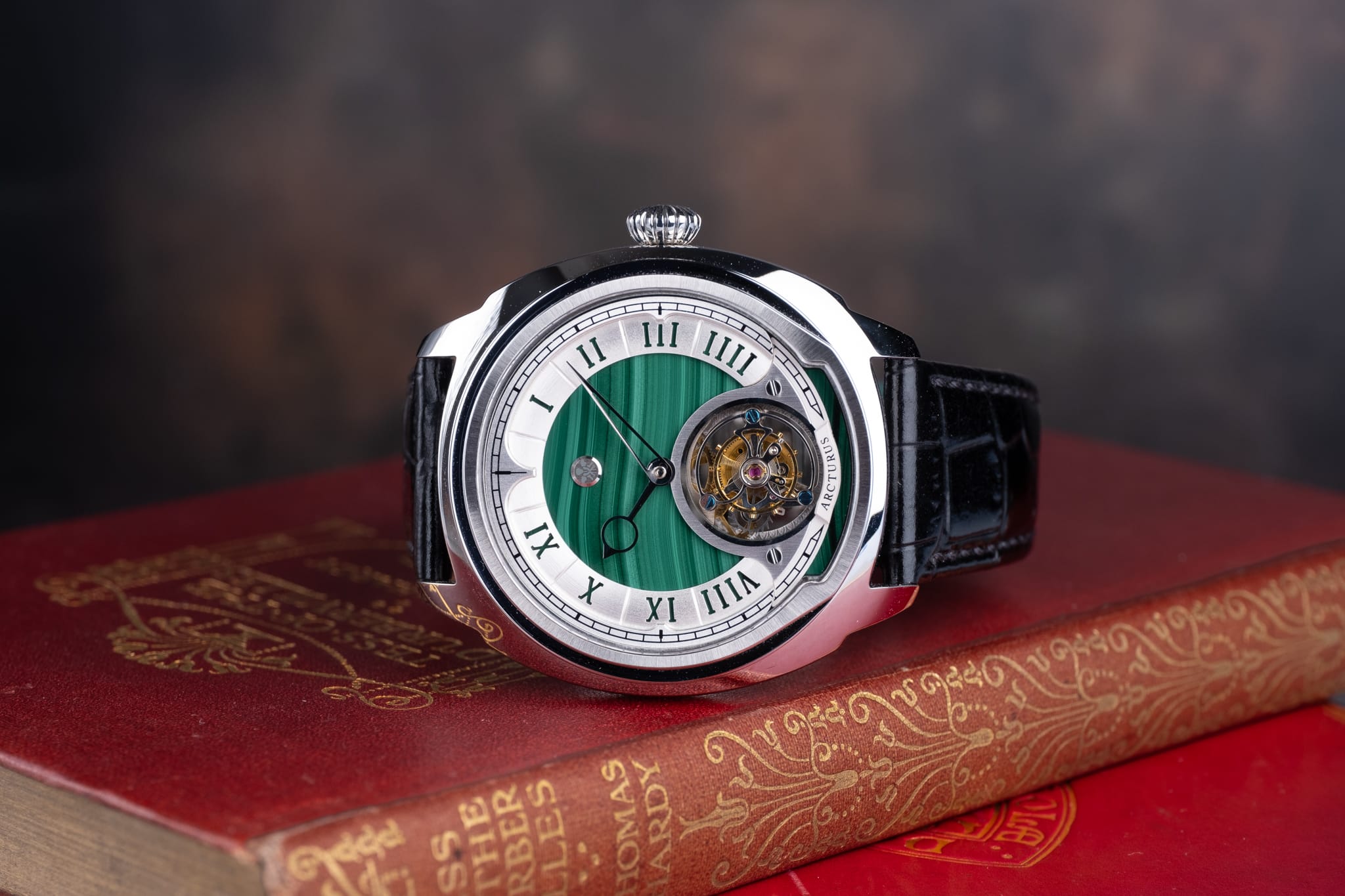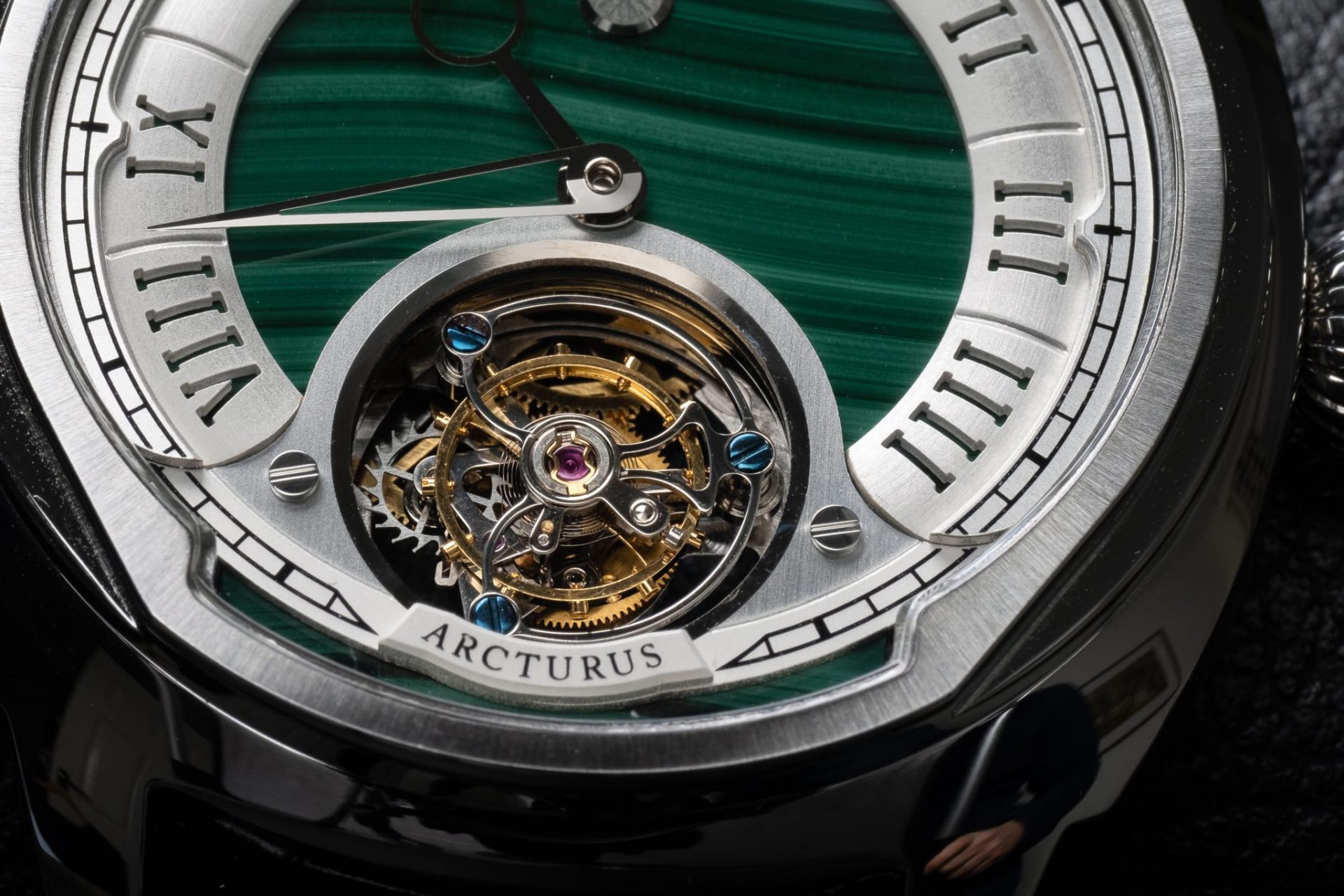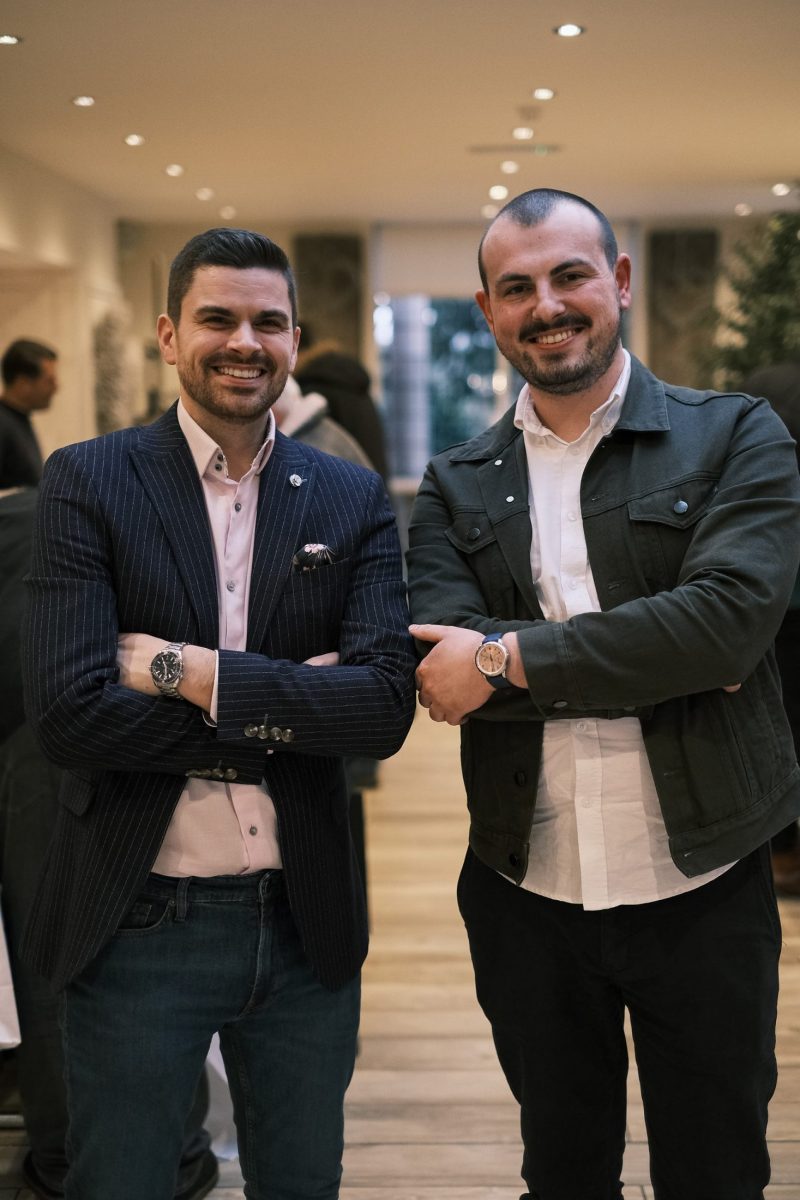Named after the brightest star in the northern celestial hemisphere, Arcturus Watches was founded in 2018 on the belief that well-designed, top-quality watches should be accessible to everybody. Their ethos is to create stunning timepieces with a signature dash of Singapore charm with designs that draw on the island-state’s multicultural melting pot for inspiration. Of course, not being Singaporean, or having even visited, I can’t say whether that’s true or not, so I’ll leave that for others to judge after reading my review of its latest offering, the LC-2 Vanda tourbillon.
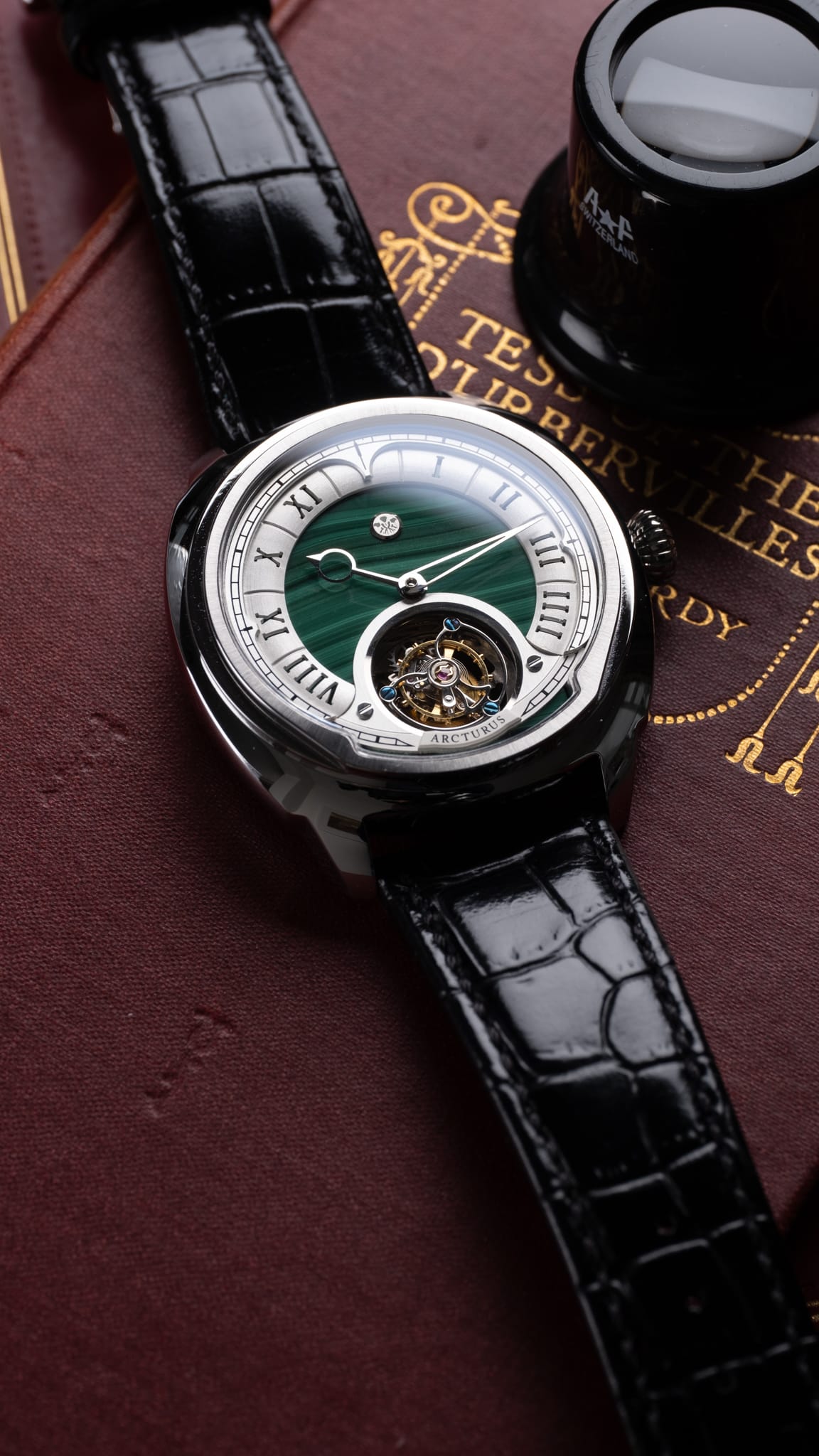
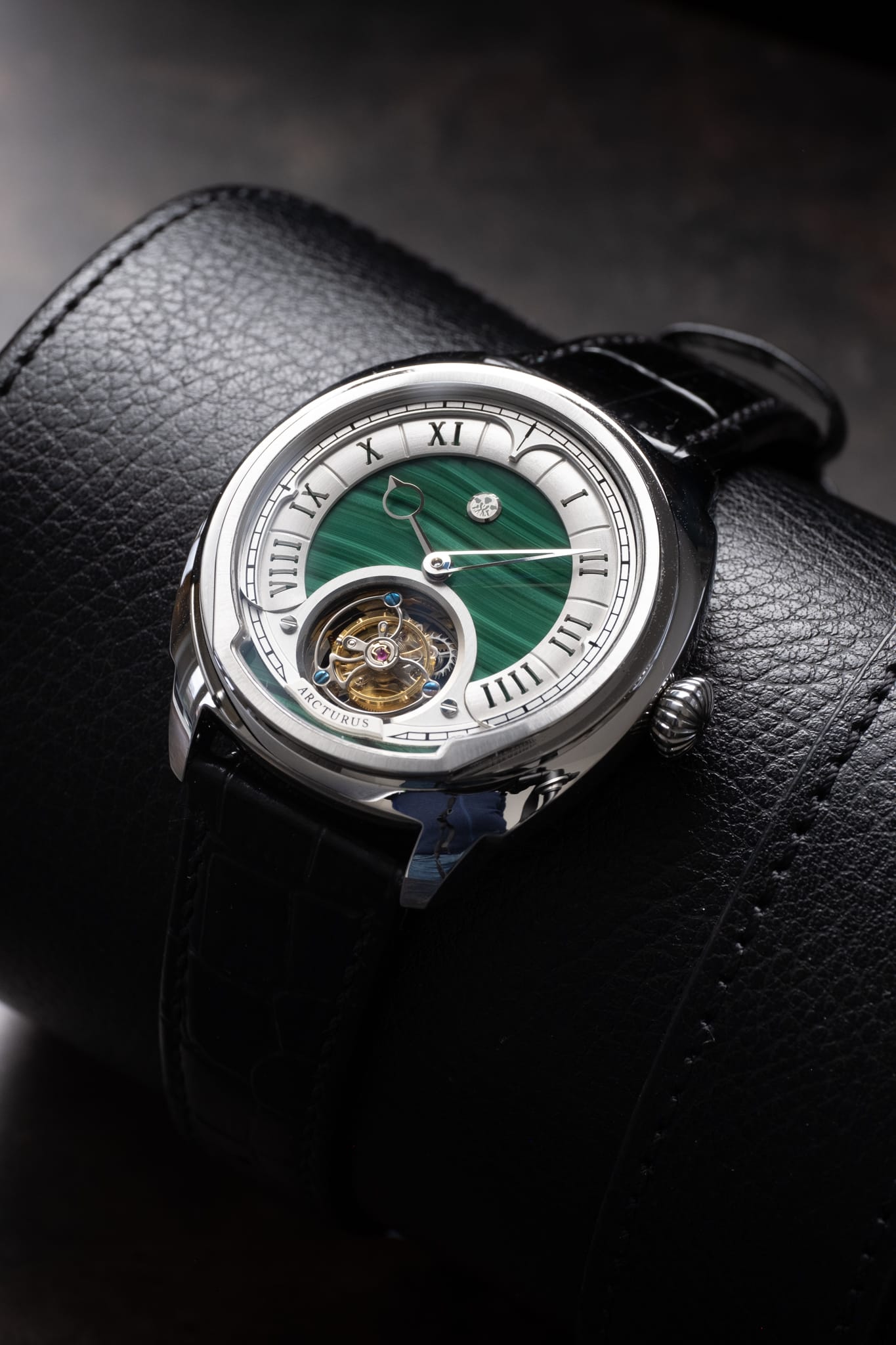
The Arcturus LC-2 Vanda Tourbillon Range
The LC-2 Vanda Tourbillon (Lion City-2 Vanda Tourbillon to give it it’s full name) is only the brand’s third release, but it’s their most ambitious to date with the most resolved design language. And as the name would suggest, it’s powered by a tourbillon movement, seen through the exhibition window at six o’clock.
The Kickstarter campaign opens on 29 February and there are three options to choose from, all based on the same design, just with different dial materials and colours used. The silver guilloche dial with black chapter ring variant is the most subdued and the cheapest of the three, starting at just USD968/SGD1288. The Aventurine dial version is a bolder choice giving that shimmering ‘night sky’ look and is the most expensive option, starting at USD1420/SGD1888. And finally, the most vibrant option, and the watch on review here, features a green Malachite dial and is priced at USD1194/SGD1588 for ‘early bird’ buyers.
To understand the symbolic naming convention here, Lion City is the nickname given to Singapore, and Vanda is named after the Vanda Miss Joaquim, Singapore’s national flower, chosen because of its resilience and year-round blooming qualities. A cross between Vanda hookeriana and Vanda teres, the orchid is named in memory of Miss Agnes Joaquim, who bred the flower in her garden at Tanjong Pagar in 1893. It was recorded as Singapore’s first orchid hybrid and the world’s first Vanda hybrid, and soon became popular all over the world as a cut flower due to its beauty and hardiness. Arcturus’ founder, Alexander Ian Loh, felt that this was representative of the Singaporean culture and what he wanted Arcturus to stand for – resilient, year-round blooming, beautiful and hardy.
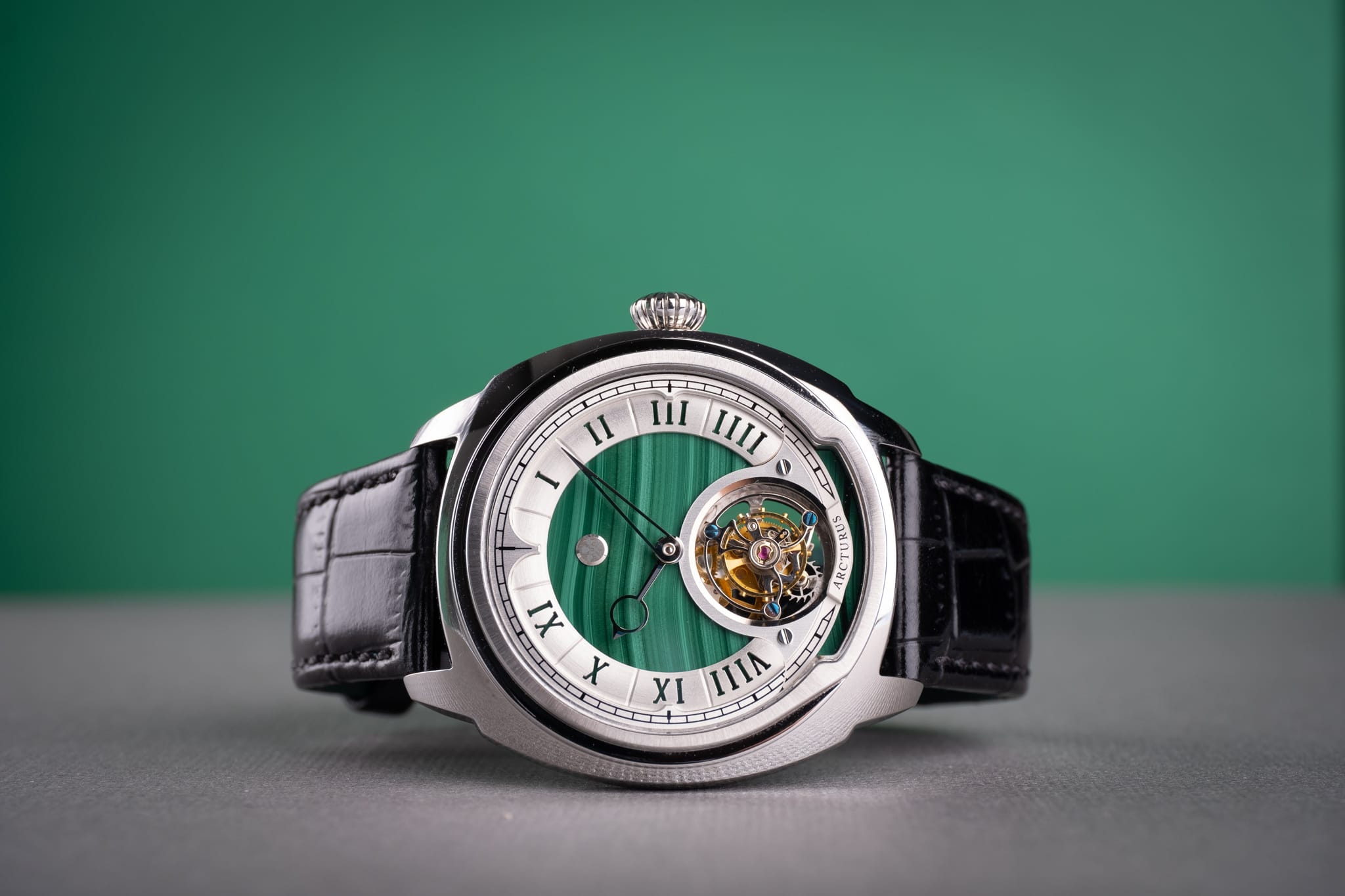
The Case and Wearing Experience
I’m going to get straight to the point here. The Arcturus LC-2 certainly won’t be for everybody as its rather masculine dimensions will rule it out for those with smaller wrists. Admittedly, to a certain extent the Vanda needs to be fairly large to accommodate the tourbillon design. However, its 44mm diameter feels excessive considering the recent market shift to more modest proportions. On the plus side, the proportionally reasonable lug-to-lug measurement of 50mm combined with a shallow caseback and downturned lugs help the watch conform to the wrist. And the thickness is just 11.8mm, which is remarkable for an affordable tourbillon. Sadly, despite these factors, the Vanda wears like a large 44mm due to its cushion-case design. What does this mean for the wearing experience? Well, let’s just say that this is most definitely not a watch for shy and retiring people. It has wrist presence! And with the Vanda’s 316L stainless steel case being almost entirely polished, save for the radially brushed top face of the top bezel, it doesn’t hide its presence.
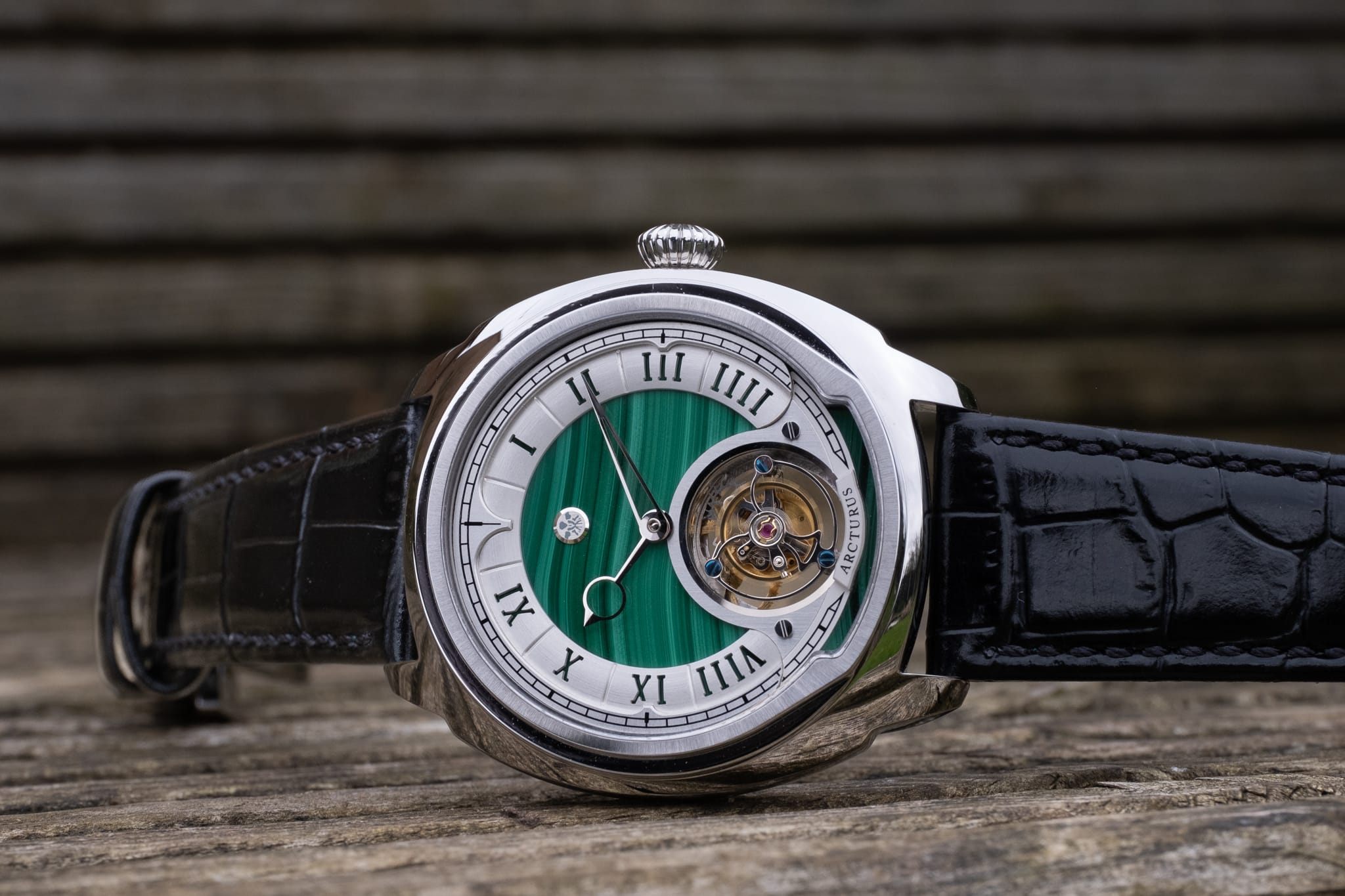
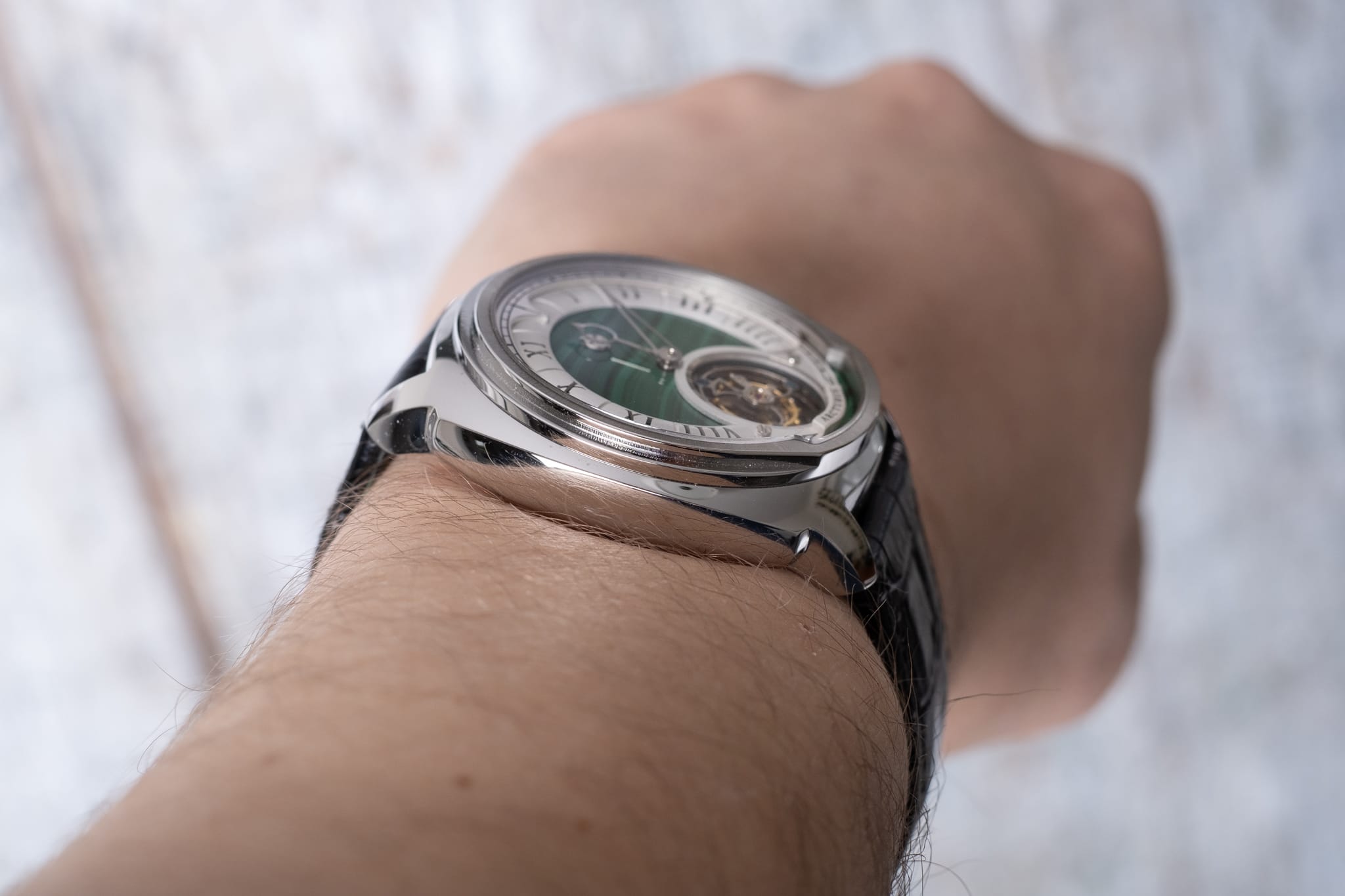
In terms of case geometry, each surface area gently transitions to the next, with nothing resembling a sharp edge in sight. This includes the lugs. Topping off the case is a double-stepped bezel which surrounds the scratch resistant sapphire crystal with anti-reflective coating applied to the inside. It’s worth noting that the sapphire is a custom-cut shape, something quite uncommon on ‘affordable’ watches, so Kudos to Arcturus here.
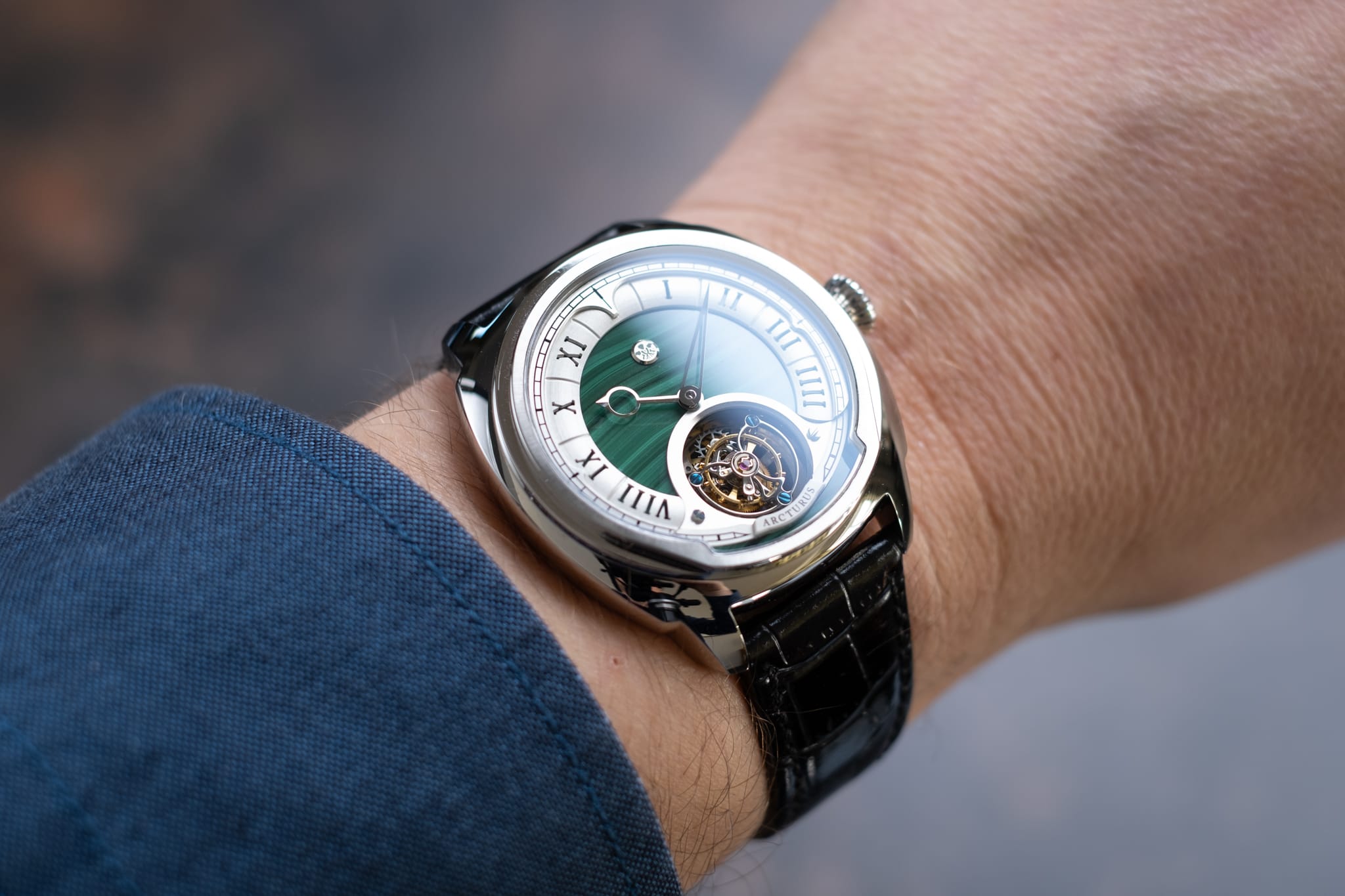
The caseback, secured by eight screws, comprises a solid section with deeply engraved Vanda orchid design on a sandblasted background, and a custom-cut exhibition window made from sapphire crystal. The caseback is very well executed and it’s nice to get a glimpse of the impressive movement from the reverse side. The large onion style crown is a joy to use, winds very smoothly and provides plenty of grip. Water resistance is 50m, which is as you’d except for a dressy tourbillon watch.
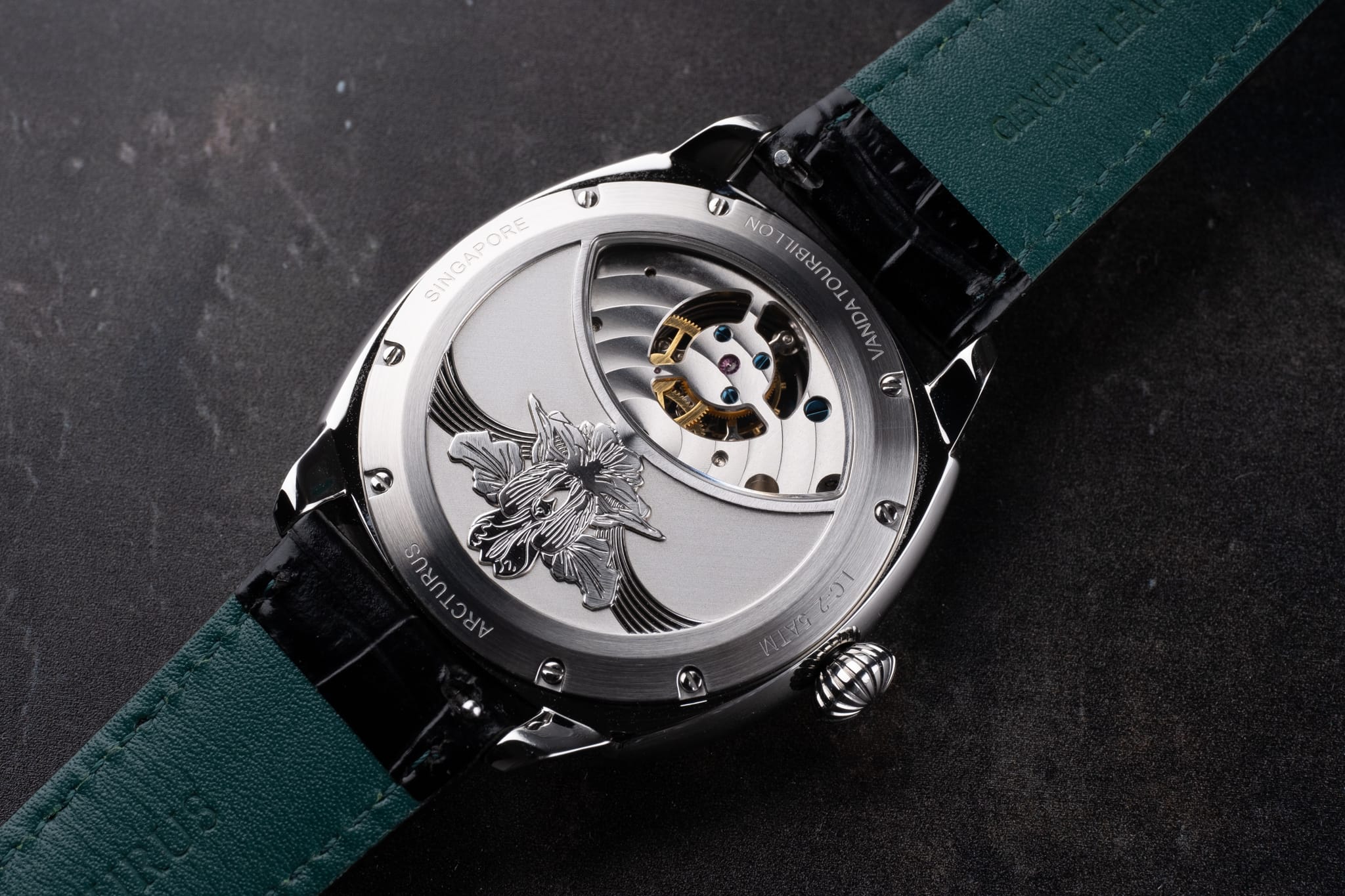
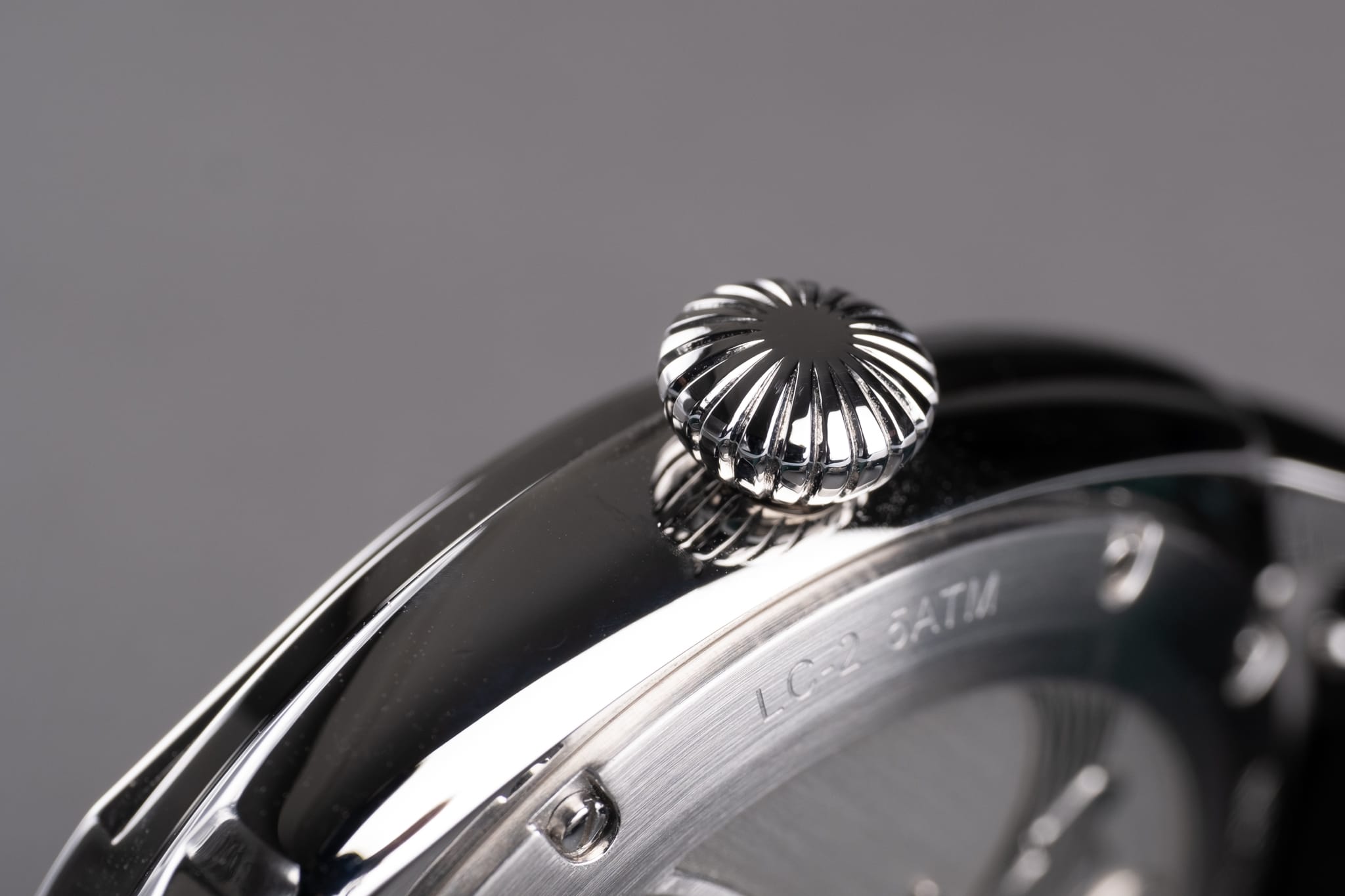
Overall, case finishing is fine, but there is room for improvement. For example, on my review watch some machining marks were evident on the polished sides of the upper bezeI. I would have also liked to have seen contrasting finishes used on the case along with sharper transitions between sections for more definition. This would visually break up the considerable mass and make scratches less obvious. However, being the type of watch it is, I’m pretty sure you’re not likely to be wearing this watch for any ‘rufty-tufty’ duties, so it’s not the end of the world.
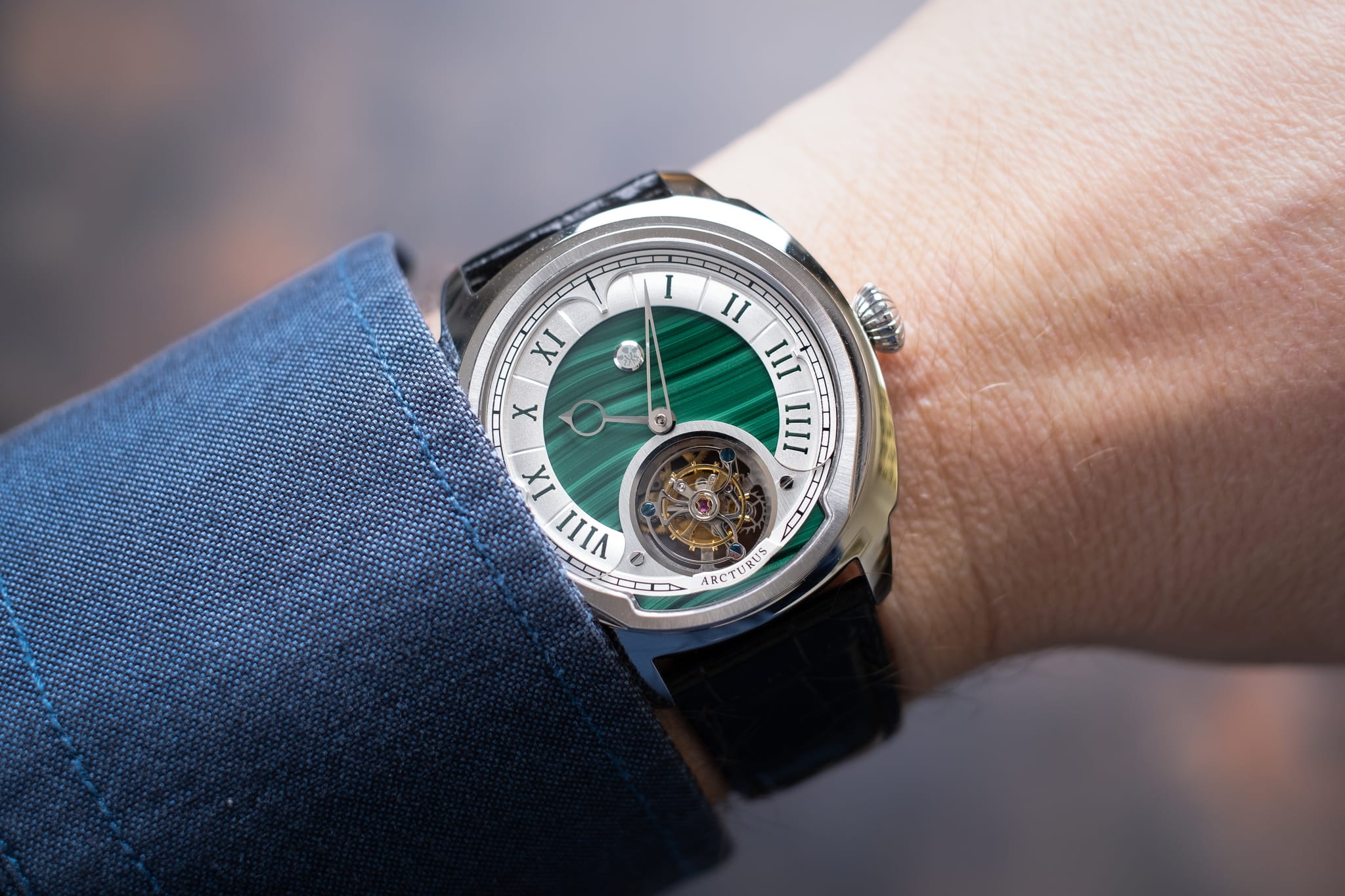
The Vanda is supplied on a 22mm full-grain leather, embossed croc-print strap which tapers to 18mm and has a polished tang buckle. The strap is glossy and quite rigid, but well made. Whilst I’d personally have preferred a softer leather strap with a matt finish, the 22mm lug width means that it should be relatively easy to find alternative straps if croc-print isn’t your style. However, I think Arcturus would be wise to at least offer an alternative for straps at time of purchase.
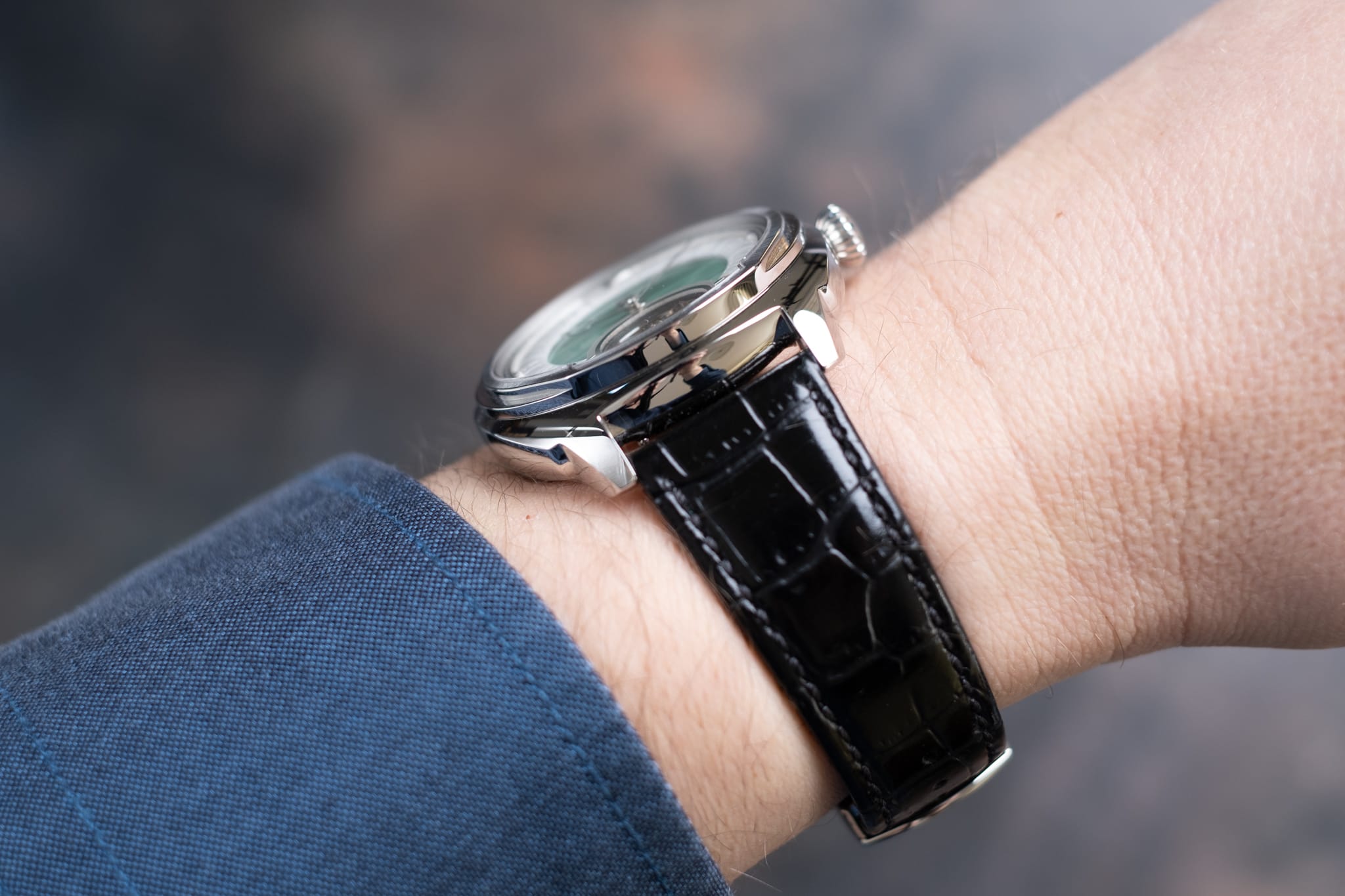
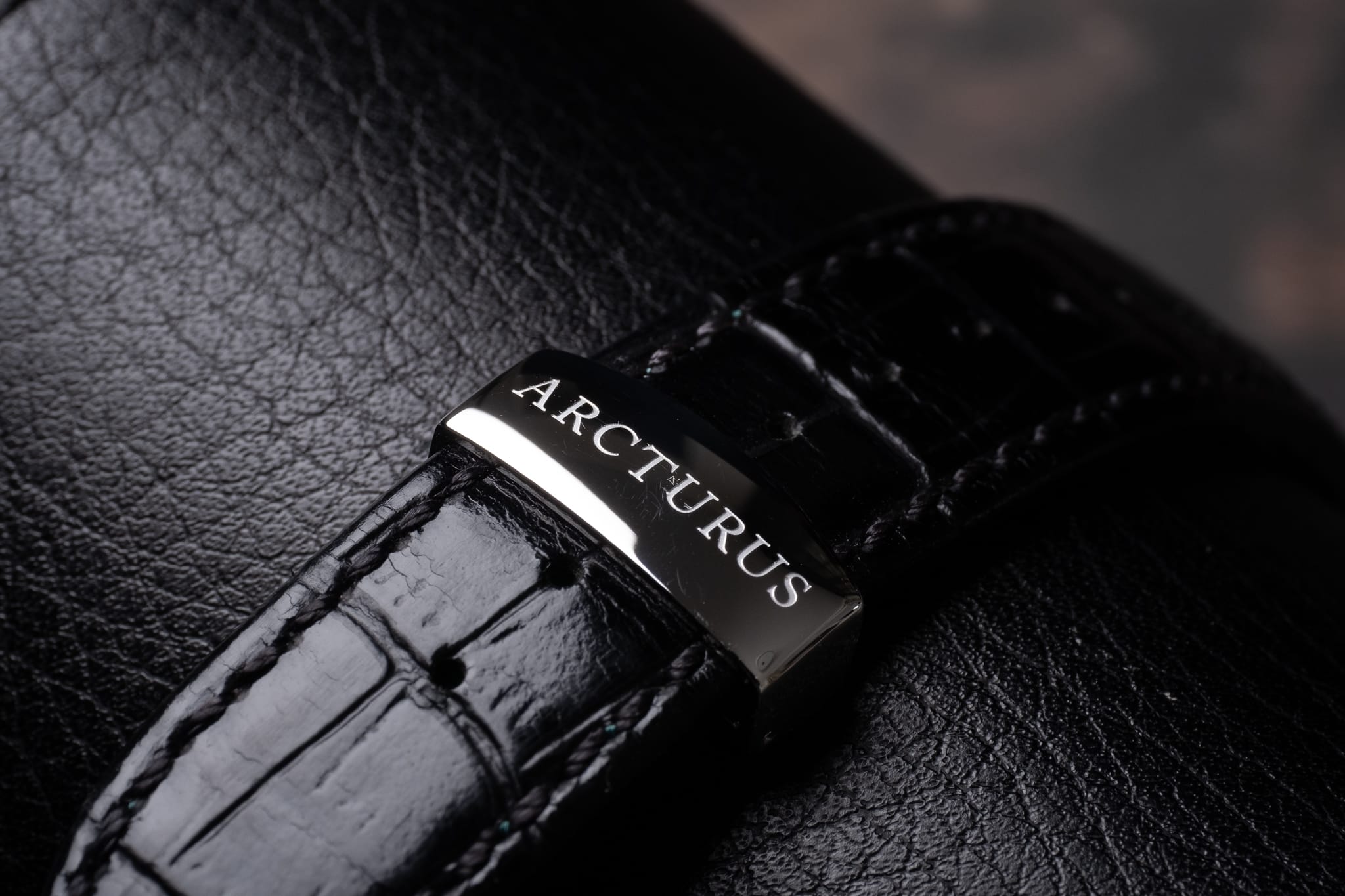
The Dial
Since the first prototype pictures were shown on social media, Arcturus has made changes to the dial, and to my eyes the additional refinements have all been positive. It also illustrates that this is a brand that aims to get things right from the outset. The hour track now has a lovely domed shape, and there is a bevelled and polished ‘coin’ featuring the Vanda Miss Joaquim orchid at the 12 o’clock position instead of the full brand name. The brand plate has instead been tastefully incorporated at the six o’clock position as part of the minute track, just below the tourbillon cut-out.
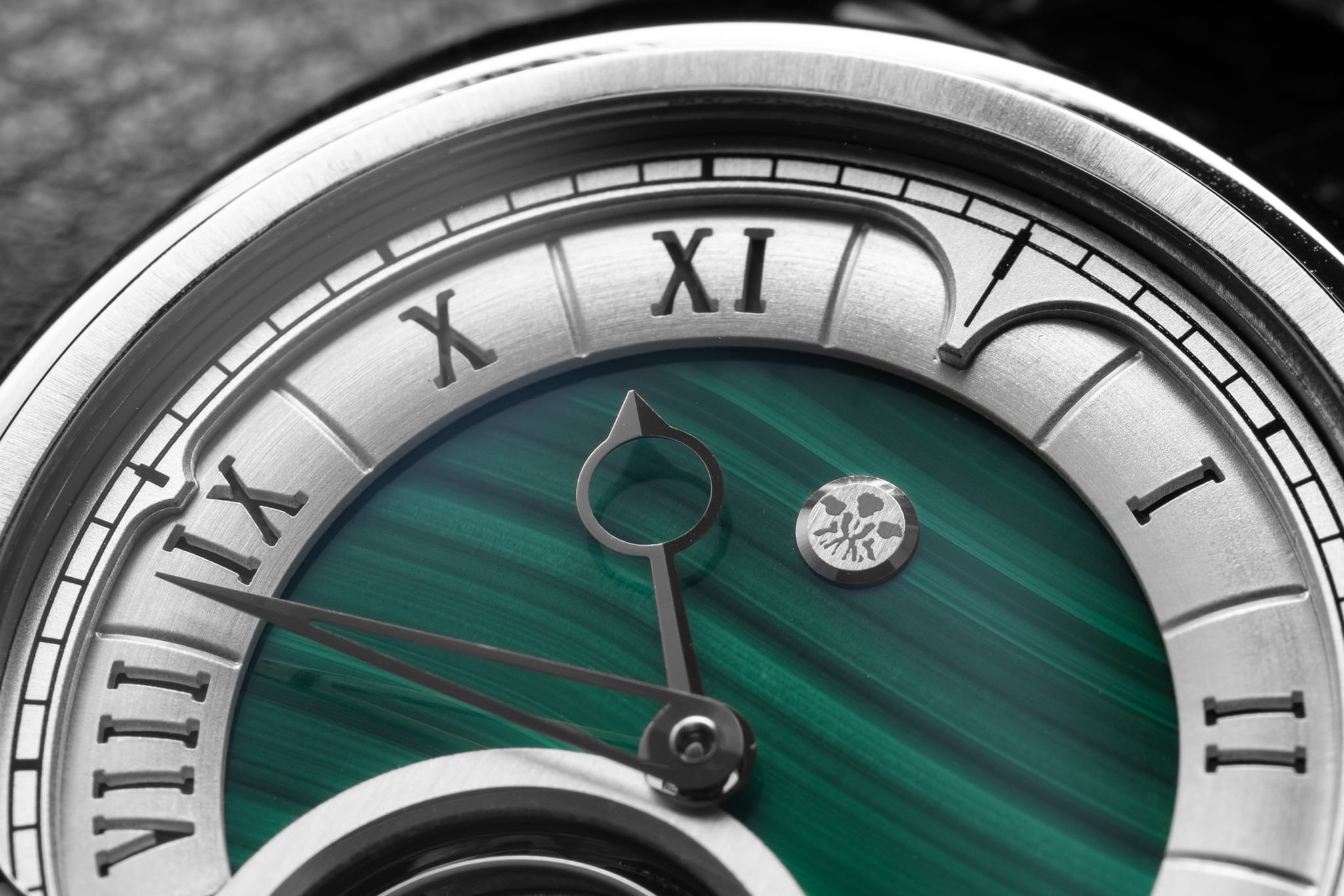
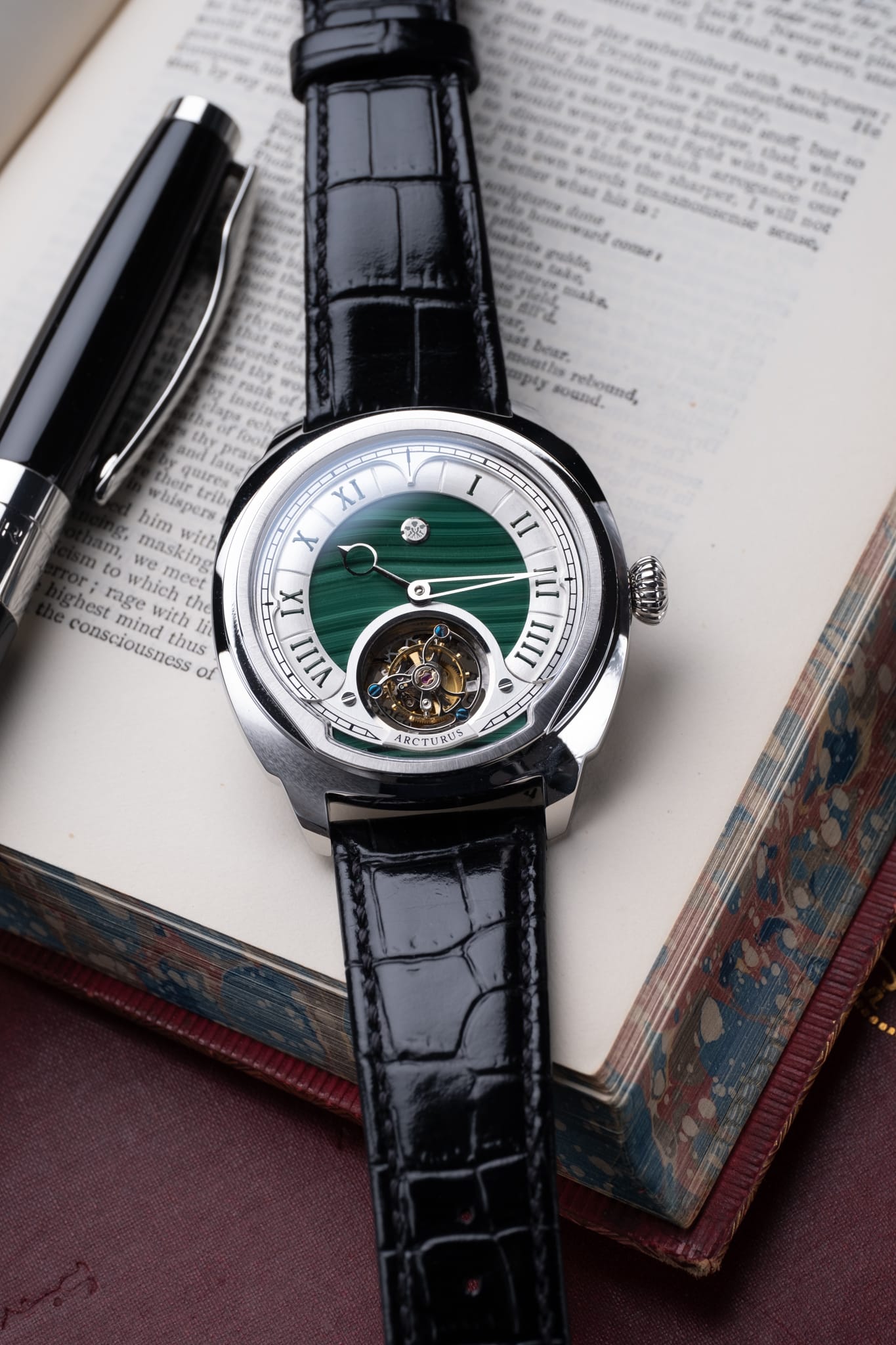
The dial of the LC-2 Vanda is complex and comprises three layers. Working from the outside in, we have a railroad minute track which is radially brushed. This sits on the uppermost dial layer and juts out at three cardinal points to lead the eye to the 3, 9 and 12 o’clock on the main chapter ring, with the shaped section at 12 o’clock replacing the roman numeral entirely.
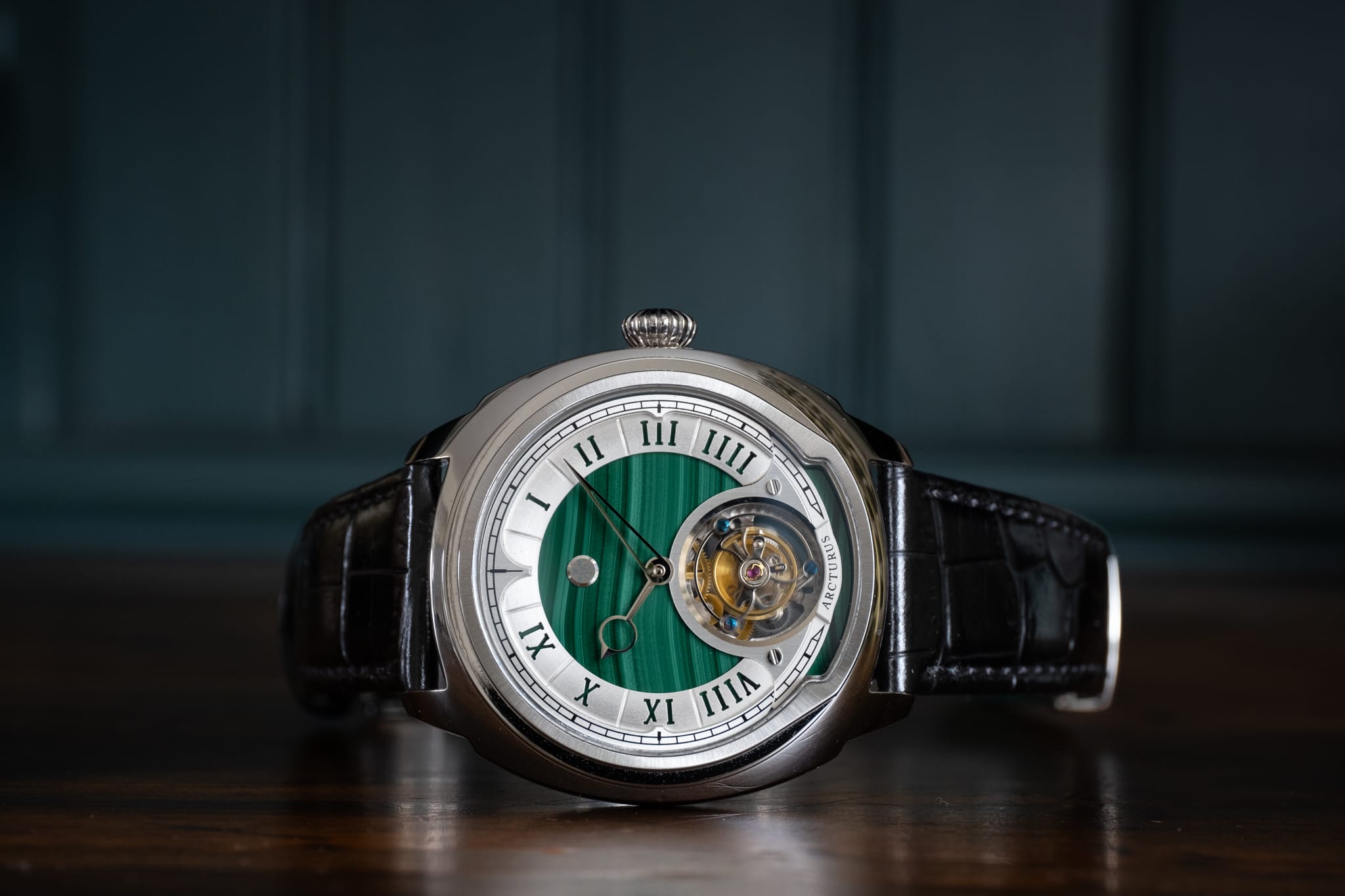
Next up, rather than individual applied hour markers, the LC-2 has a unique domed chapter ring which is a key design element introduced after Arcturus’ first protype. This chapter ring has circular brushing and large Roman numerals arranged in a radial fashion from 8 o’clock to 4 o’clock. Deep engraved lines separate each hour zone. A watchmaker’s four is used to balance the eight, and the 5, 6 and 7 are omitted to make room for the star of the show, the tourbillon viewing window. Rather than being printed, engraved or applied, the Roman numerals are completely cut out, right through to the green malachite dial beneath. The dial is utterly gorgeous with contrasting shades of striations. Thankfully, other dial furniture is kept to a bare minimum, with just the aforementioned Vanda ‘coin’ at 12 and brand name plate underneath the tourbillon window at six o’clock.
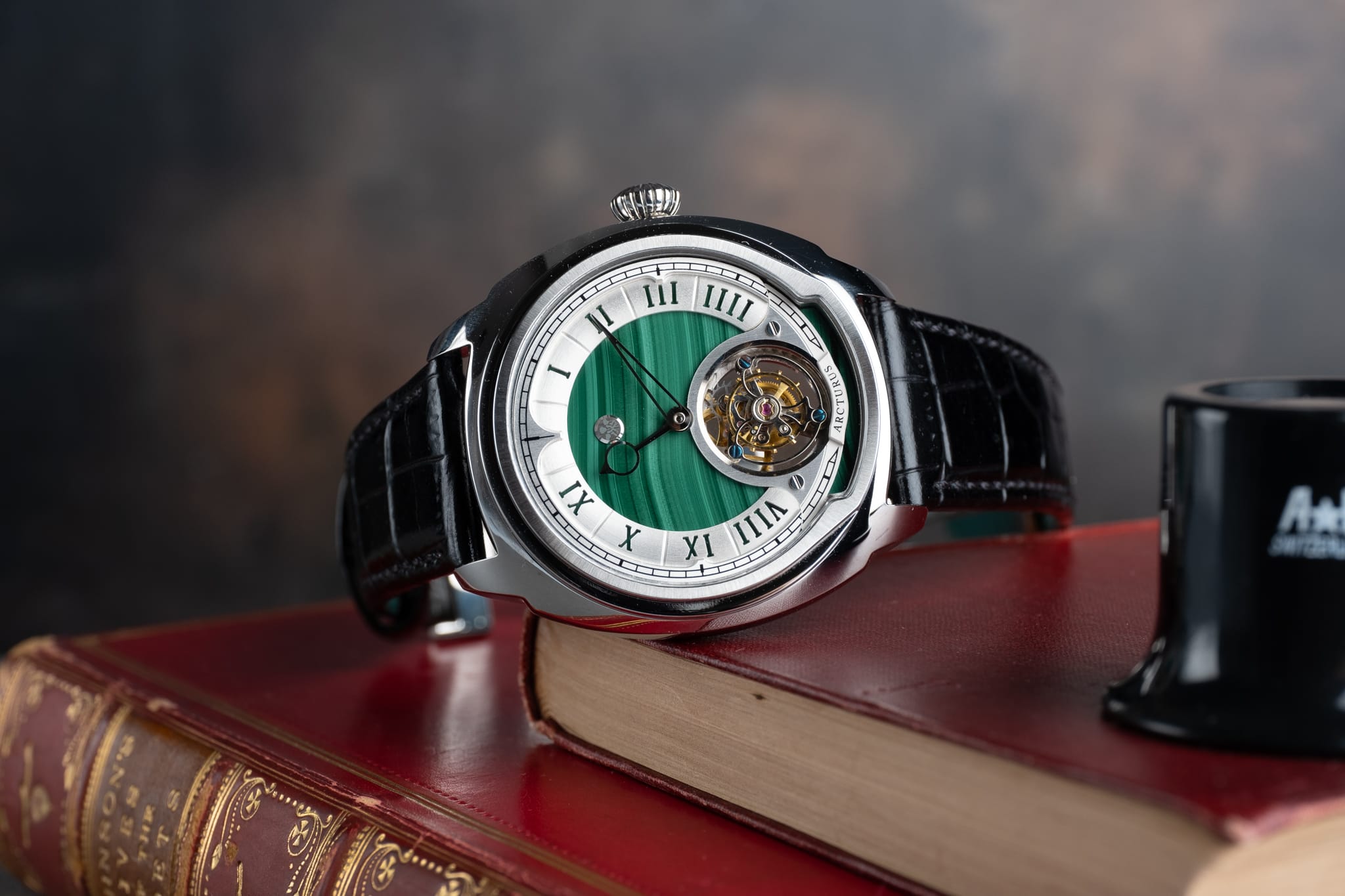
Two visible screws secure the vertically brushed tourbillon plate, which has a wide polished chamfer to the inner. It would be nice if these screws were mirrored to maintain symmetry, rather than being positioned at the same angle, but I do understand that this isn’t always possible.
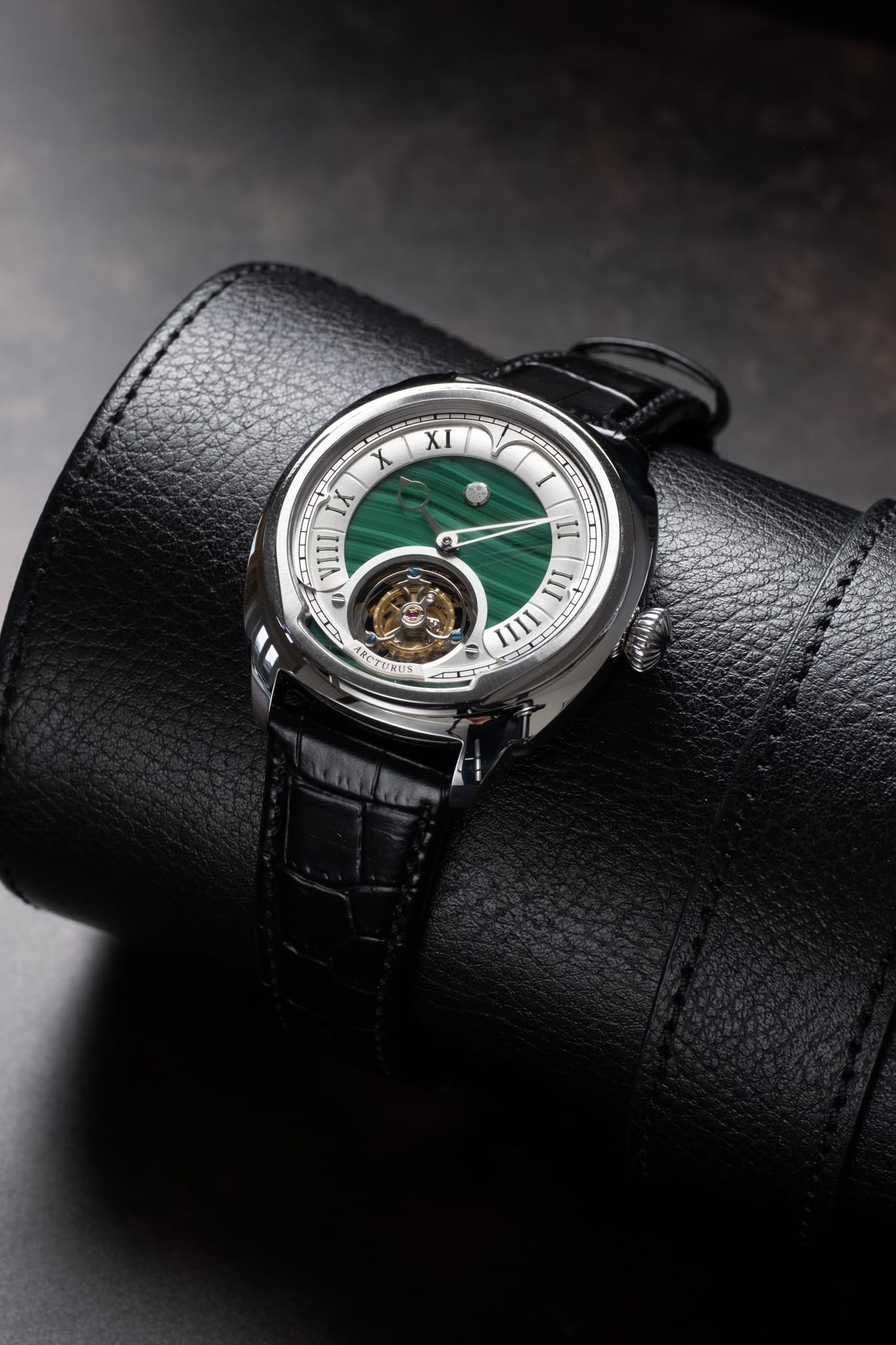
Skeletonised and polished hands complete the package. The Breguet-style hour hand is creased down the centre with an oversized circular aperture towards the tip. This aperture is carefully placed so that it perfectly frames the Vanda ‘coin’ as it passes over, a lovely detail. The Dauphine-style minute hand tapers considerably from the pinion down to the tip. The Vanda doesn’t have a seconds hand, so this isn’t a watch to wear when you need precise timing. However, because the tourbillon regulator oscillates whilst turning 360 degrees over the course of one minute, you can get an approximation of seconds by tracking a set point on the tourbillon, such as one of the blued screws.
The Tourbillon Movement
The star of the show is undoubtedly the tourbillon movement. For those unfamiliar with the tourbillon, it is a type of movement that was invented by Abraham Louis Breguet way back in 1795 and patented in 1801, as a way of bringing greater accuracy by compensating for positional variance. This was achieved by installing the entire escapement inside a mobile carriage that performs a complete rotation each minute. Since Breguet invented the single-axis tourbillon, other horologists have taken his design even further and it’s widely believed that the flying tourbillon, so called because it appears to float in mid-air, was invented in Glashütte, in 1920, by Albert Helwig. The ‘flying’ is achieved by securing the carriage from underneath, so that visible top bridges can be done away with altogether. It’s the flying tourbillon design that we see here in the Arcturus LC-2 Vanda.
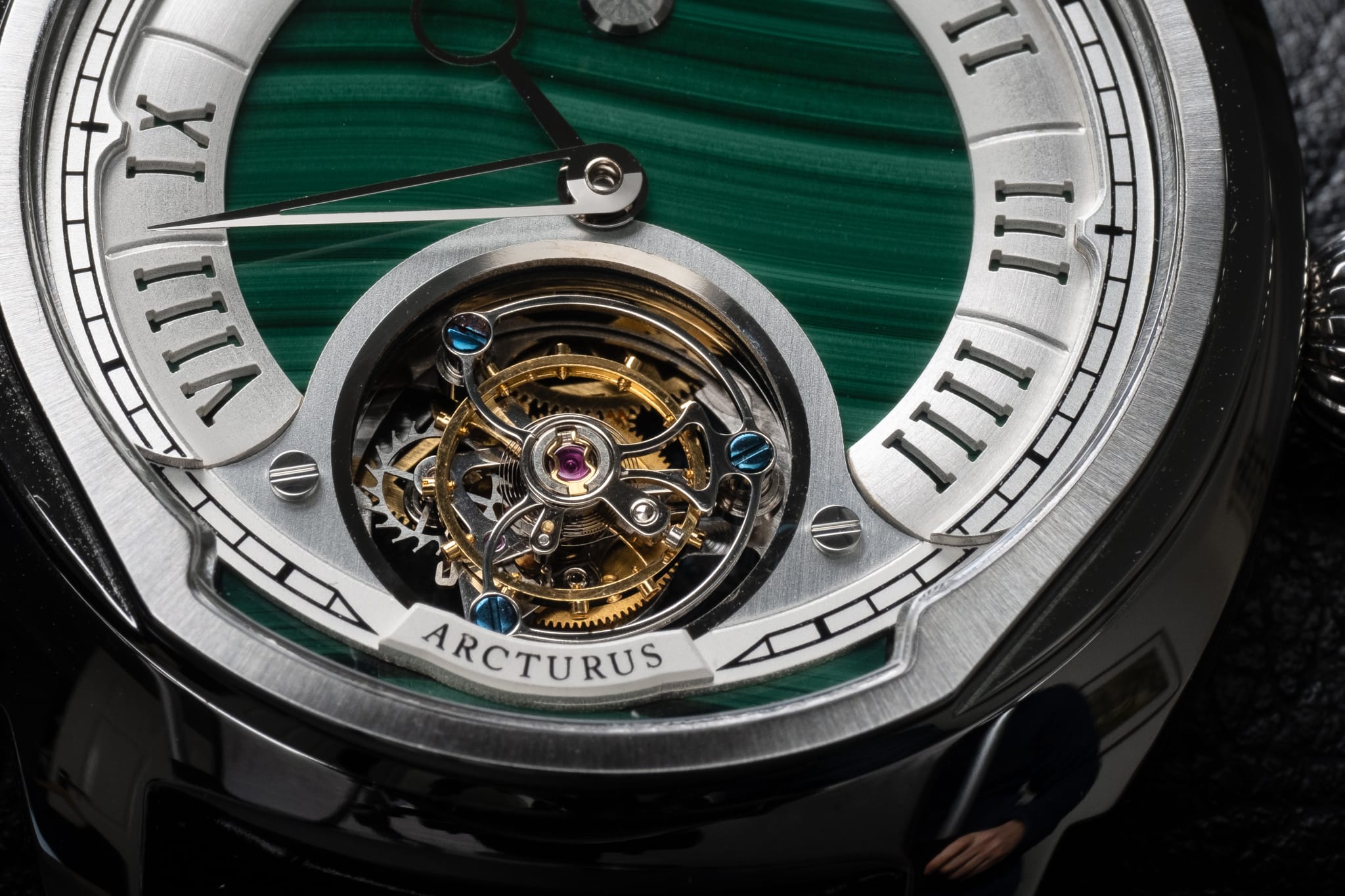
Whilst watchmakers have since found alternative (and cheaper) ways of achieving consistent and high levels of accuracy, premium watch brands such as JLC, Patek Phillipe and IWC continue to make tourbillon watches to showcase what they are capable of. These watches typically sell in the high tens of thousands of pounds. In recent years however, brands with less clout have been challenging the big boys by innovating, and it’s become easier for those with less deep pockets to join the rich and famous. That said, even the most affordable Swiss-made tourbillons typically start at around £8000, which is still out of reach for many.
Enter Arcturus LC-2 Vanda!
Prices for the Arcturus on the other hand start at under £1000 at the time of launch, which is a lot more attainable for watch enthusiasts who have long yearned to add a tourbillon to their collection. This offers insane value for money, but how is this possible? Most of the cost reduction is achieved by using a Chinese-made Peacock SL-5200 Flying Tourbillon hand-wound movement. Secondly, being a microbrand aimed at enthusiasts, unlike big-name brands, Arcturus doesn’t have to put excessively hefty markups on its watches to justify heritage or prop up huge marketing budgets.
The Peacock SL-5200 Flying Tourbillon has a power reserve of 48-hours and a beat rate of 21,600bph. The standard accuracy rating for this movement is +/- 10s to +/- 20s, but Arcturus has regulated the movement further to provide an improved accuracy of +/-10s per day, tested to four positions. This is to be applauded.
Of course, the standard of movement finishing doesn’t match that of a high-end Swiss tourbillon, but you can’t expect it to. What is on show is generally finished to a decent standard though, and it’s only when you look under magnification that small flaws are visible (e.g. tooling marks and a discoloured blued screw on my review watch). Importantly though, the movement looks like a work of art and you still get to be mesmerised by the magical dance of the tourbillon; a real visual feast for the eyes!
Final Thoughts
Th Arcturus LC-2 Vanda is a real mixed bag. On the one hand, I think some watch enthusiasts will find the watch too big and a bit brash, with its elaborate and largely traditional design. If the watch was shrunk down to 42mm, it would undoubtedly have a wider reach and would also come across as a bit more sophisticated. That said, no watch is going to appeal to everyone, and it doesn’t have to. The Vanda’s trump card is simple…value for money! The mere fact that it’s a flying tourbillon and uses exotic dial materials and complex design is worth the price of admission alone. To even get a watch that houses a tourbillon movement for this kind of money would have been unheard of before the Chinese began making them.
As a tourbillon isn’t exactly a common purchase even for seasoned watch collectors, I did some research for this article to help position the Vanda in the world of tourbillon watches. To put it into context, a generic Ali Express ‘factory watch’ devoid of any level of design and from a faceless organisation could set you back approx. £600. At the other end of the scale, even an ‘affordable’ Swiss-made tourbillon will cost you upwards of £8000 (Horage, Frederique Constant, Delma etc).The Vanda cleverly straddles the line between the two, so it’s remarkable that Arcturus can offer this watch for less than £1000. It combines complex dials that use exotic materials, custom-made components such as uniquely shaped sapphire crystals and domed chapter ring, and a regulated movement that’s feels and sounds surprisingly refined. It’s also a watch with a unique design language and lots of character. It looks unlike anything else, and this is refreshing. Arcturus offer a two-year warranty and even generously offer to pay 50% of future servicing costs to help quell concerns over costs of tourbillon ownership. As long as you take into consideration the case size and the fact that finishing in places could be improved, in many ways the Vanda offers an unmissable opportunity for those who, like me, are fascinated by the mechanics and romance of a tourbillon but have previously thought them to be out of reach.
